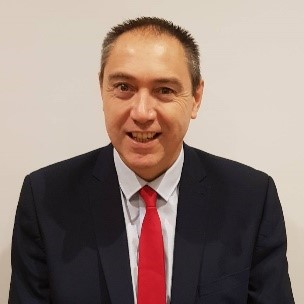Preventing the impact of youth violence through partnership

Using a public health approach to protect vulnerable children and young people during a pandemic.
By Jon Drake, Director, Wales Violence Prevention Unit
 Jon is a former Police Officer, having served for more than 30 years in Staffordshire and latterly South Wales Police, where he was Assistant Chief Constable.
Jon is a former Police Officer, having served for more than 30 years in Staffordshire and latterly South Wales Police, where he was Assistant Chief Constable.
Whilst in South Wales Police, Jon had responsibility for serious organised crime and protecting vulnerable people, and was the Wales police lead for serious violence and National Police Chiefs Council Lead for intelligence.
In December 2019, Jon was appointed as the Director of the Wales Violence Prevention Unit.
This year has proven difficult for many, but for some people it has been a frightening and even dangerous time.
Experts from across the globe have warned of the consequences the lockdown and social distancing restrictions may have on violence in the home, with the United Nations describing it as a “shadow pandemic”.
Children and young people have been – and, indeed, continue to be – heavily impacted by the coronavirus response measures. As a consequence, they have had less opportunity to rely on the support of friends, extended family, schools and community programmes, meaning vulnerable children and young people may be suffering the effects of abuse and neglect within the home in silence, unable to speak to a trusted adult about their situation.
This concern is reflected in the data. Helplines have seen a large increase in child welfare contacts where Coronavirus was mentioned specifically in relation to sexual abuse online. There has also been an increase in both the number of counselling sessions about emotional abuse for children, and a significant increase in calls from adults regarding concerns about a child relating to neglect, physical and emotional abuse.
The lack of routine for many children and young people may also leave them more susceptible to child criminal exploitation, child sexual exploitation, youth violence and radicalisation.
The costs of violence
There is, of course, a financial cost to responding to violence, although the health and emotional costs of violence for people who experience it can be far greater than the economic burden it places on services.
However, with the right tools, skills and resources, violence can be prevented, and with it the emotional cost to victims and perpetrators and the financial cost to public services. The Wales Violence Prevention Unit has a single mission: to prevent violence in Wales. To do this, we are implementing a public health approach to violence prevention, which challenges the notion that violence is inevitable but rather that it can be predicted and prevented like any other health problem.
This means we seek to understand the causes of violence based on evidence. We use this evidence to develop interventions focused on the underlying causes of violence. We properly evaluate these interventions before scaling up each one – if appropriate – to help more people and communities across Wales.
Our latest research estimates that short-term costs associated with physical injuries from assault and abuse amount to £13.9 million every year in Wales. This includes the costs of A&E attendances, ambulance call outs and hospital admissions, with a further £22.2 million spent on treatment for the emotional impact of violence, such as counselling for depression and anxiety.
The research also found that £158.8 million is spent every year in Wales on treatment for depression and anxiety, alcohol use and illicit drug use. An increasing body of research has identified that a proportion of these health concerns can result from the individual experiencing violence and neglect in childhood, indicating that violence contributes to this substantial cost.
I think we can all agree that this money would be better spent on preventing violence from happening in the first place; rather than treating the problem, let’s focus on eliminating it completely.
Reaching out to vulnerable children and young people
Despite this challenging time, it is now more important than ever to reach out and provide support and guidance for vulnerable children and young people.
Crimestoppers' Fearless youth service is a fantastic example of how implementing a public health approach can prevent violence. By building partnerships with key agencies at a local level, and providing early intervention to children and young people at risk of becoming involved in violence, the Fearless team help prevent violence through education.
We are proud to work with Crimestoppers and Fearless as key partners and champions of violence prevention.
 Jon is a former Police Officer, having served for more than 30 years in Staffordshire and latterly South Wales Police, where he was Assistant Chief Constable.
Jon is a former Police Officer, having served for more than 30 years in Staffordshire and latterly South Wales Police, where he was Assistant Chief Constable.Whilst in South Wales Police, Jon had responsibility for serious organised crime and protecting vulnerable people, and was the Wales police lead for serious violence and National Police Chiefs Council Lead for intelligence.
In December 2019, Jon was appointed as the Director of the Wales Violence Prevention Unit.
This year has proven difficult for many, but for some people it has been a frightening and even dangerous time.
Experts from across the globe have warned of the consequences the lockdown and social distancing restrictions may have on violence in the home, with the United Nations describing it as a “shadow pandemic”.
Children and young people have been – and, indeed, continue to be – heavily impacted by the coronavirus response measures. As a consequence, they have had less opportunity to rely on the support of friends, extended family, schools and community programmes, meaning vulnerable children and young people may be suffering the effects of abuse and neglect within the home in silence, unable to speak to a trusted adult about their situation.
This concern is reflected in the data. Helplines have seen a large increase in child welfare contacts where Coronavirus was mentioned specifically in relation to sexual abuse online. There has also been an increase in both the number of counselling sessions about emotional abuse for children, and a significant increase in calls from adults regarding concerns about a child relating to neglect, physical and emotional abuse.
The lack of routine for many children and young people may also leave them more susceptible to child criminal exploitation, child sexual exploitation, youth violence and radicalisation.
The costs of violence
There is, of course, a financial cost to responding to violence, although the health and emotional costs of violence for people who experience it can be far greater than the economic burden it places on services.
However, with the right tools, skills and resources, violence can be prevented, and with it the emotional cost to victims and perpetrators and the financial cost to public services. The Wales Violence Prevention Unit has a single mission: to prevent violence in Wales. To do this, we are implementing a public health approach to violence prevention, which challenges the notion that violence is inevitable but rather that it can be predicted and prevented like any other health problem.
This means we seek to understand the causes of violence based on evidence. We use this evidence to develop interventions focused on the underlying causes of violence. We properly evaluate these interventions before scaling up each one – if appropriate – to help more people and communities across Wales.
Our latest research estimates that short-term costs associated with physical injuries from assault and abuse amount to £13.9 million every year in Wales. This includes the costs of A&E attendances, ambulance call outs and hospital admissions, with a further £22.2 million spent on treatment for the emotional impact of violence, such as counselling for depression and anxiety.
The research also found that £158.8 million is spent every year in Wales on treatment for depression and anxiety, alcohol use and illicit drug use. An increasing body of research has identified that a proportion of these health concerns can result from the individual experiencing violence and neglect in childhood, indicating that violence contributes to this substantial cost.
I think we can all agree that this money would be better spent on preventing violence from happening in the first place; rather than treating the problem, let’s focus on eliminating it completely.
Reaching out to vulnerable children and young people
Despite this challenging time, it is now more important than ever to reach out and provide support and guidance for vulnerable children and young people.
Crimestoppers' Fearless youth service is a fantastic example of how implementing a public health approach can prevent violence. By building partnerships with key agencies at a local level, and providing early intervention to children and young people at risk of becoming involved in violence, the Fearless team help prevent violence through education.
We are proud to work with Crimestoppers and Fearless as key partners and champions of violence prevention.
Find out more about the work of Wales Violence Prevention Unit
Find out more about Fearless, where young people can access non-judgmental information and advice about crime and criminality and give information about crime 100% anonymously
discover our latest campaign, silence won't stop violence, and find out how you can speak up to help save lives
Find out more about Fearless, where young people can access non-judgmental information and advice about crime and criminality and give information about crime 100% anonymously
discover our latest campaign, silence won't stop violence, and find out how you can speak up to help save lives